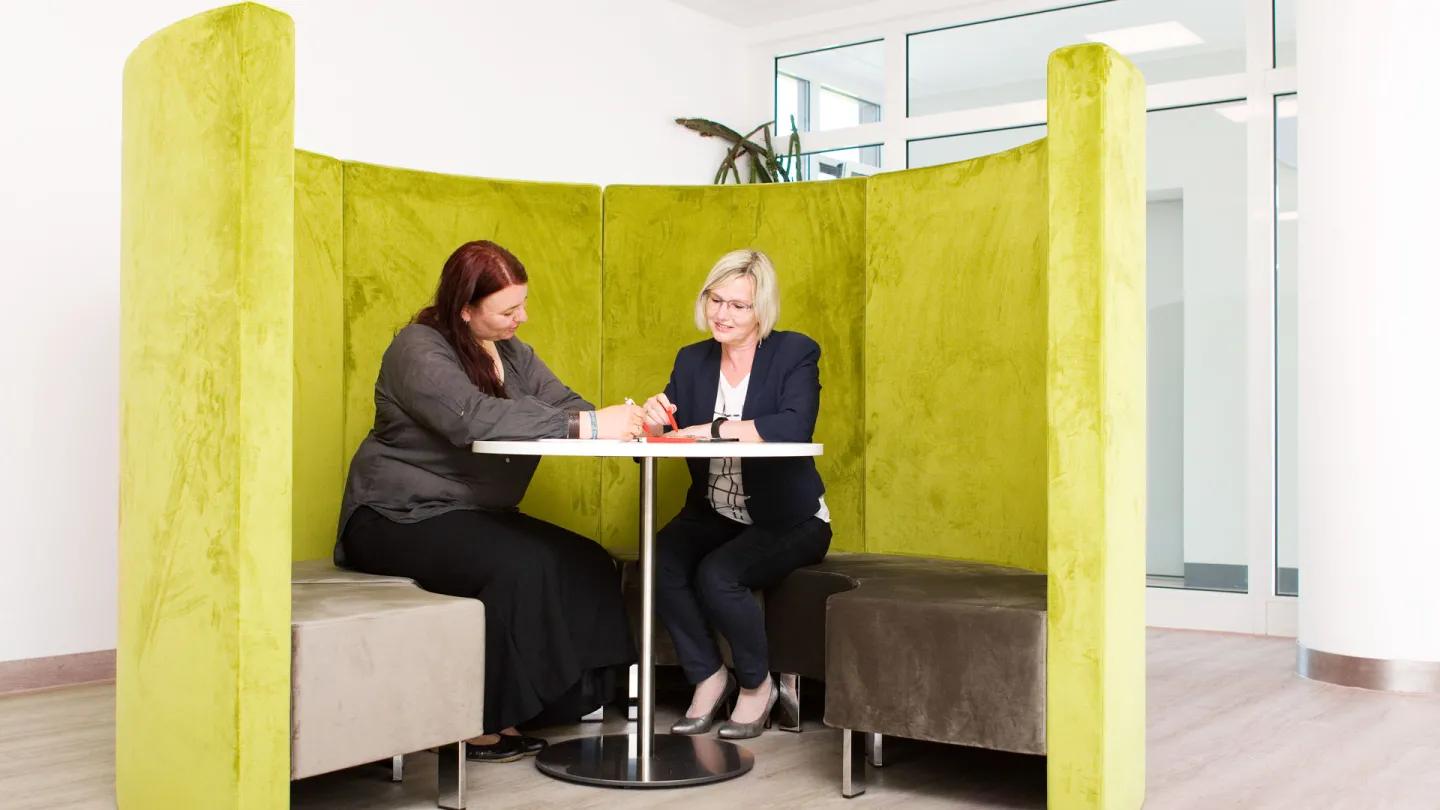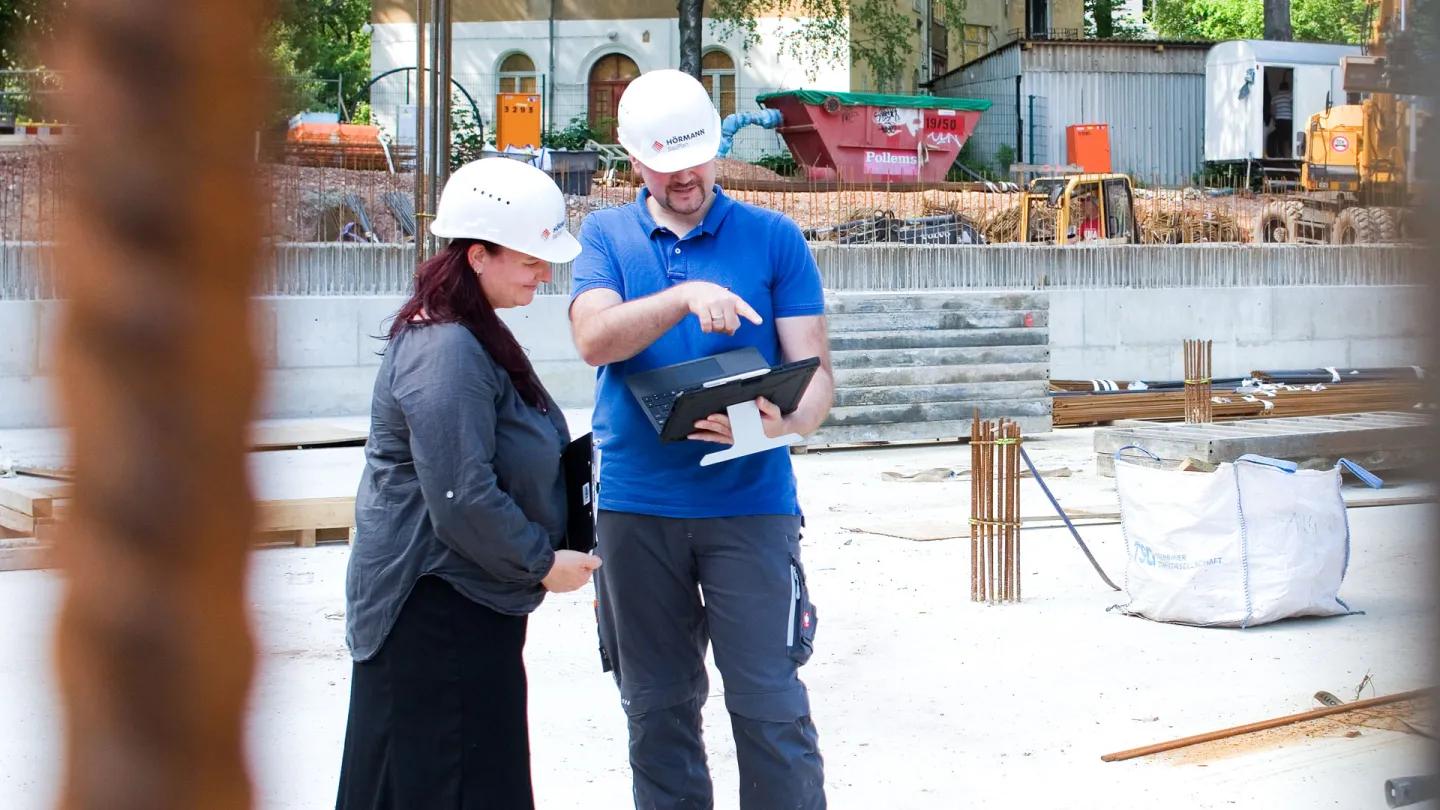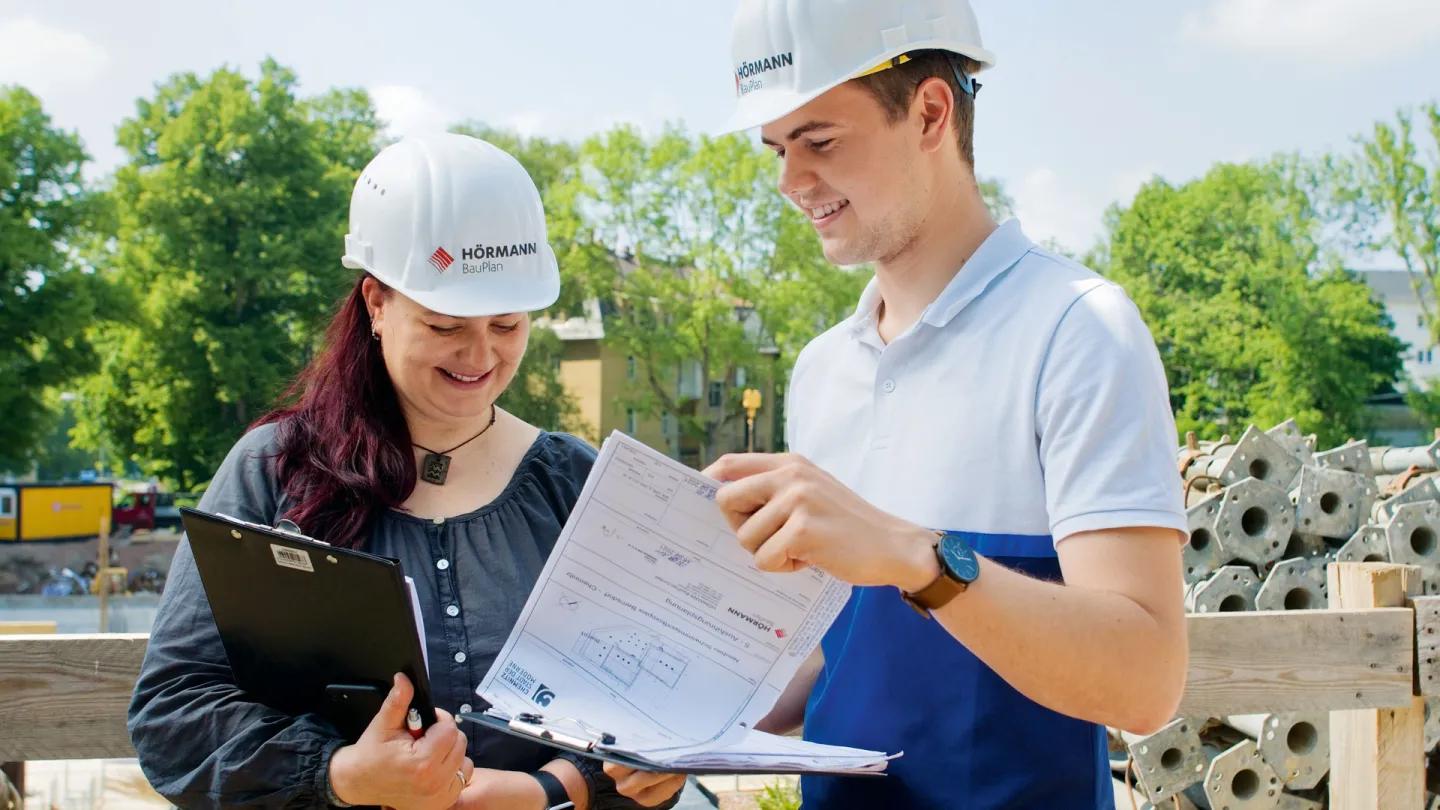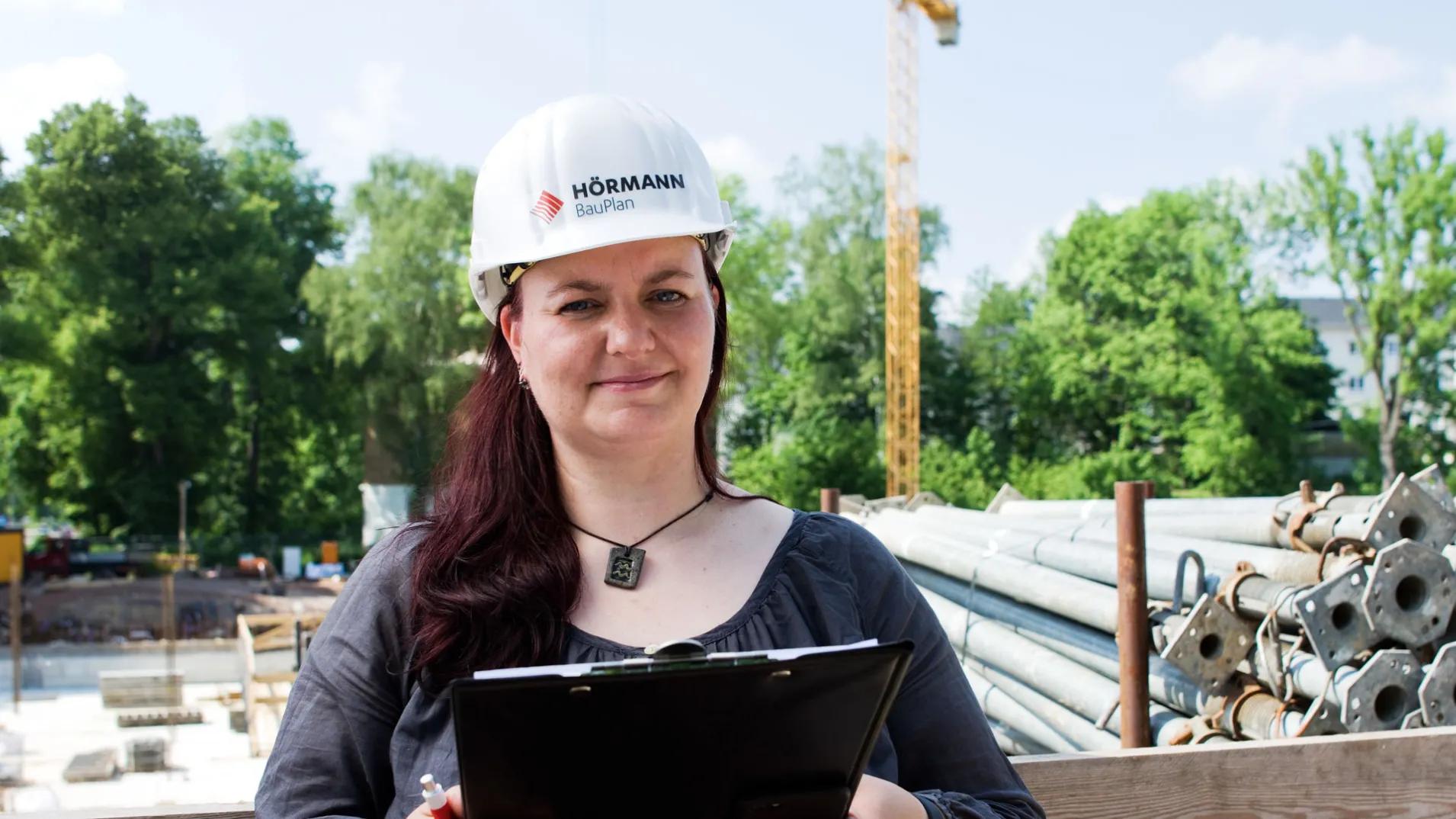
EXPERIENCED PROFESSIONALS
Planners and draughtsmen are on an equal footing - without "professional differences"!
6 questions for Denise Eppler
You studied architecture and have a degree in engineering (Dipl.-Ing. (FH)). You work at HÖRMANN BauPlan as a technical draughtswoman. How did you come to do this
?
Through several detours. When I finished my architecture degree, the career prospects for beginners were unfortunately not exactly rosy and it was difficult to find a job that I could live on. I then spent six months taking part in competitions at an architecture firm. After a qualification course in media design, I surveyed real estate for Telekom all over Germany. My understanding of structural engineering helped me a lot.
And then?
I finally wanted to "go to work" normally, have a family and work with colleagues. By a stroke of luck, I got a job as a technical draughtswoman at a garden and landscape architecture firm. Drawing living organic material such as trees, shrubs and plants for the outdoor areas and thus intervening in the landscape design was a great task. Among other things, I helped draw the plans for the Federal Garden Show in Gera in 2007. I've been with HÖRMANN since 2008.
What is your job?
Simply put, I draw what the engineers plan. At the same time, as a draughtswoman, I have to pay attention to and know a few things, for example to avoid duplicating work in CAD or to ensure that the client's CAD guidelines are implemented. The majority of my working time involves drawing electrical and information technology plans. I also have additional tasks, such as revising forms in terms of quality management, as a trained first aider I am also our certified "corona tester" and I look after and update our homepage
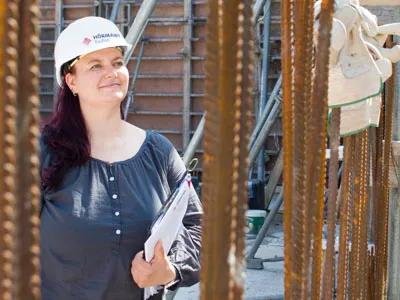
"Our motto: There's no such thing as impossible!"
Denise Eppler
Technical draughtswoman in electrical engineering and information technology
HÖRMANN BauPlan GmbH, Chemnitz
Was the lateral entry difficult?
I had to learn a lot, because although I learned drawing and design by hand and in CAD during my architecture studies, technical drawing requires technical understanding to be implemented "by hand". You don't learn things like how to draw lights in the floor plan and not have lamps, or that a load-break switch works without weights, when you're studying architecture.
What do you like about your job and about HÖRMANN?
My environment is businesslike and very pleasant. We are a cool team in the technical building services department at HÖRMANN BauPlan, where you are not only supported professionally, but can also work together as a team. Planners and draughtsmen are on an equal footing, there are no "class differences". And I appreciate the variety of projects - among other things, I worked on the ELT and FMT plans for the climate zone house (desert and jungle hall) for the Federal Garden Show in Erfurt. But also on a school campus in Leipzig, where there were other special challenges. Our motto: There's no such thing as impossible!
What do you find exciting about electrical engineering?
The fact that you can also be creative with technical solutions - even if that sounds paradoxical at first. But planners have a number of opportunities to use the material to be used very efficiently or, for example, to play a very active role in the design of the architect's lighting concepts by selecting the lighting.
